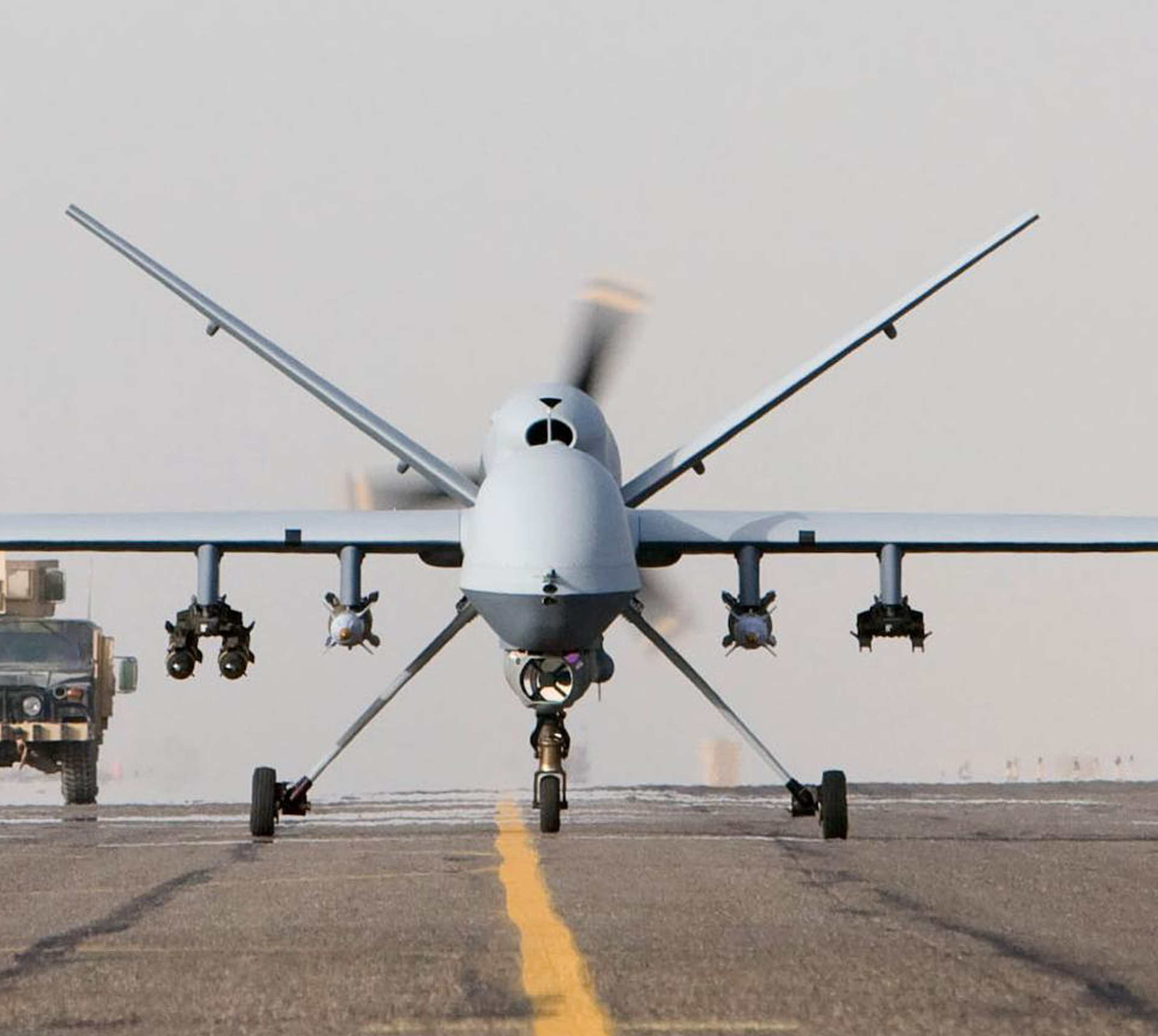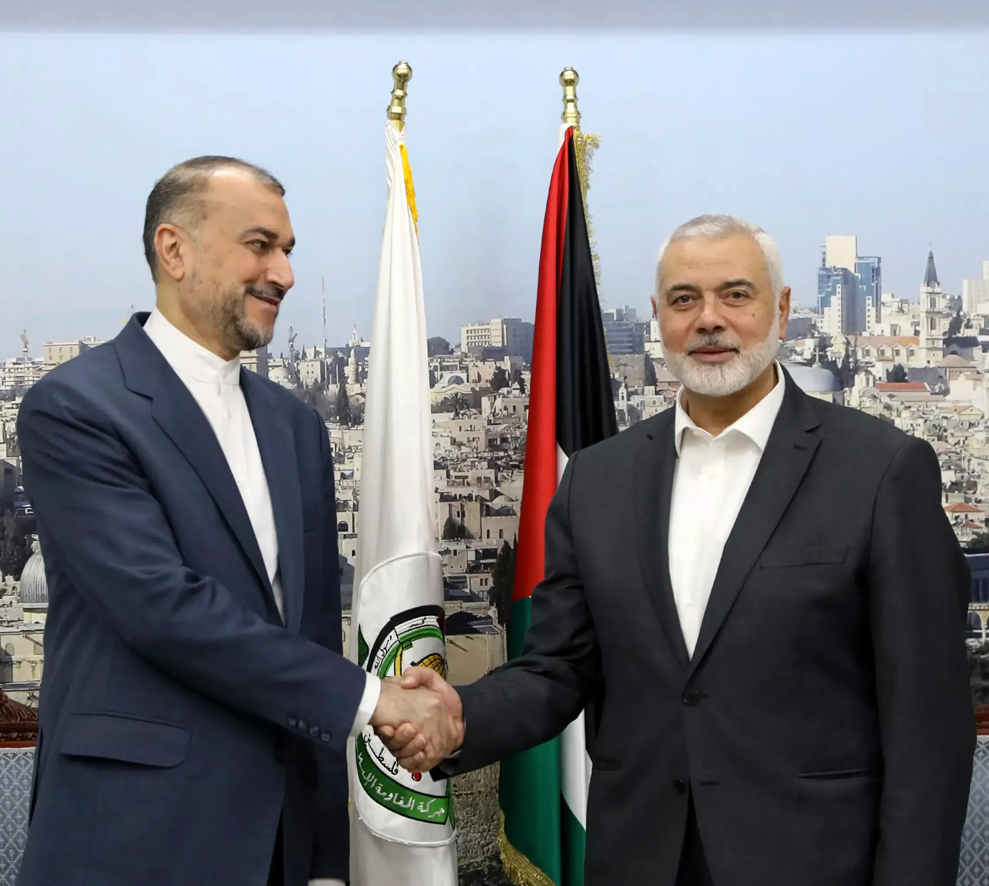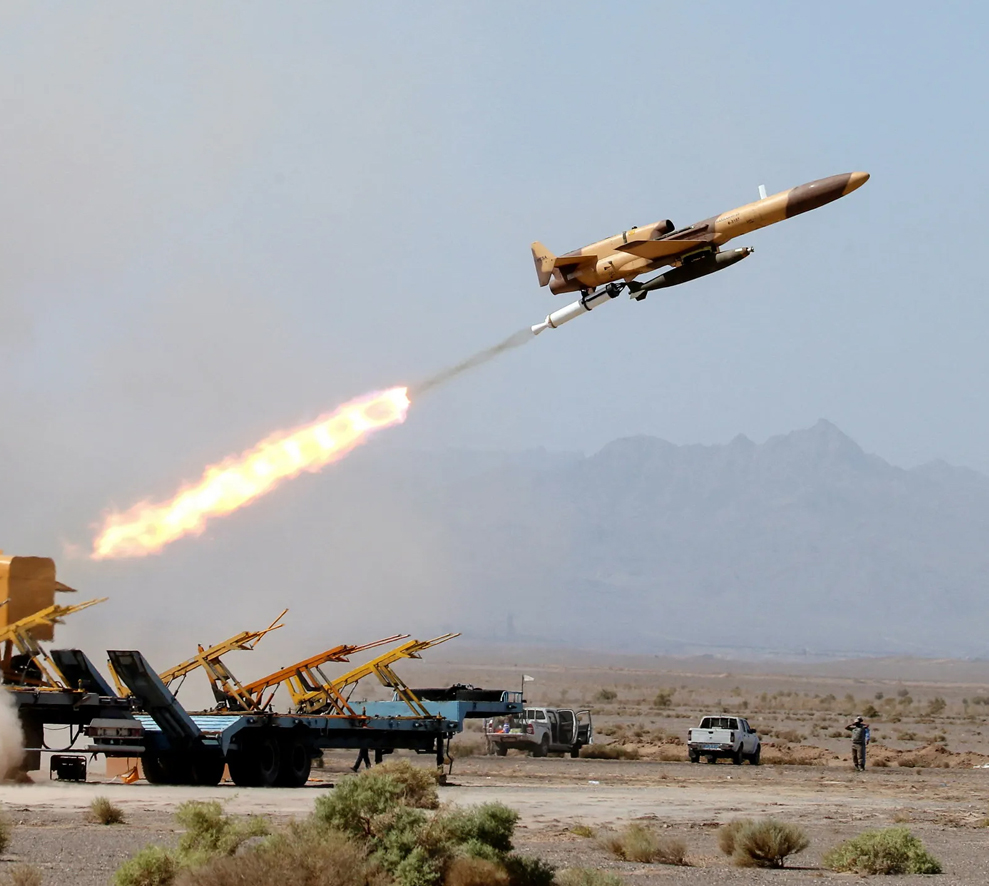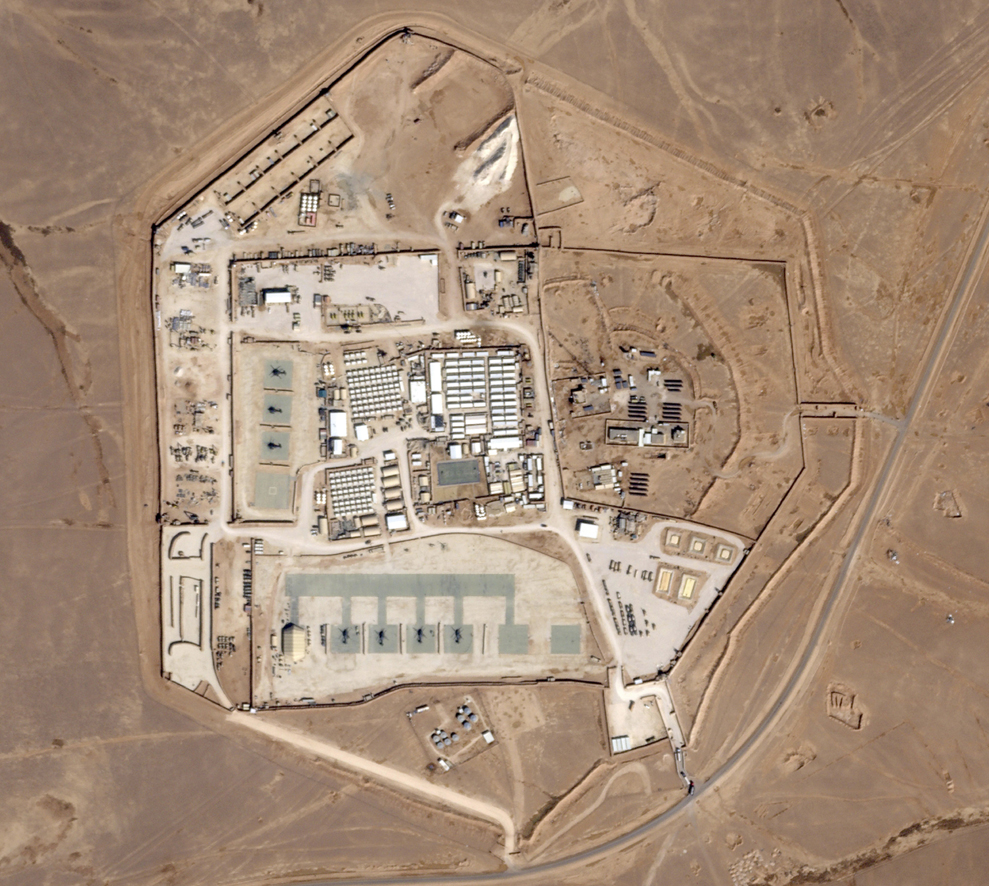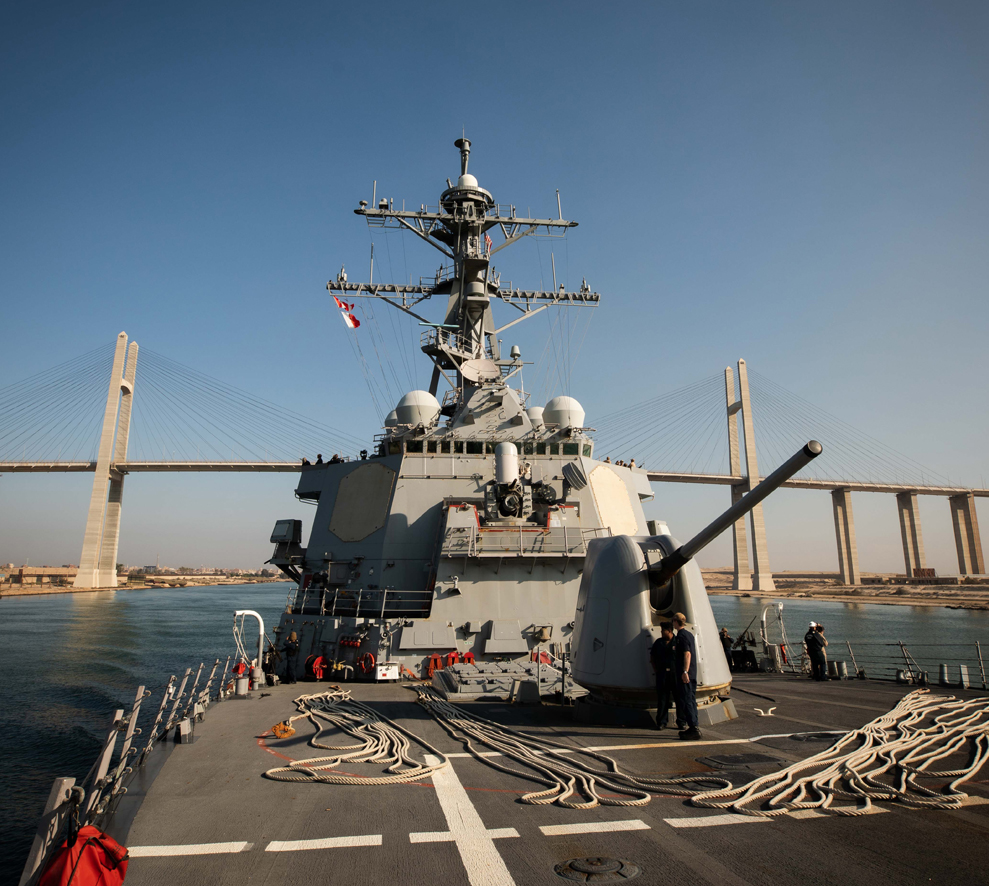Introduction
As part of national and international counterterrorism strategies, the tactic of targeting the terrorist organizations’ major leaders, known as the "Decapitation" strategy, represents a symbolic victory over these organizations, a moral defeat of their bases and members, a fall to their promises and slogans. Such strategies put those organizations in severe organizational crises, not only at the level of succession of the targeted leadership, but also in communication and funding networks.
Perhaps the clearest evidence, on the importance of this strategy, is the effective and influential position occupied by the leaders in the terrorist organizations, their roles, and power targeting such leaderships entails a confusion to these organizations, their networks, branches, and communications, in a way that leads to deep crises within them, that may lead to the fall and collapse. On the other hand, may be that these organizations may witness internal disputes and conflicts between their elements and branches. One of these two possibilities is what most violent organizations are facing after targeting their prominent leaders.
Due these reasons and other reasons, the operations of targeting the terrorist organizations’ leaders is a part of the effective national and international strategies to confront terrorism. They are considered to be a pillar within the framework of efforts and tracks to combat terrorism internationally, despite the fact that such strategies have different names and descriptions, where some researchers call it the "strategy of Decapitation", while the Iraqi government calls it "the solid will", others call it "the hard hammer". However, all of these strategies come in one context that emerged since killing al-Qaeda leaders, before and after its leader Osama bin Laden, who was killed in 2011, until killing his successor Ayman al-Zawahiri in early August 2022. The same applies to continuous targeting of ISIS leaders, that lasted from 2016 until the killing of Abu Bakr al-Baghdadi in 2019, up to Maher al-Aqal, the leader of ISIS in Syria, who was killed on July 12, 2022.
The historical Development of the Solid Will and Decapitation Strategy
The strategy of solid will and Decapitations began with the killing of Abu Musab al-Zarqawi in June 2006, also with the U.S. expansion of the use of drones and remote-controlled aircrafts since 2007. This expansion became a key pillar in targeting al-Qaeda leaders and affiliates in Yemen, Afghanistan, and Pakistan, due to the prominent role of such planes in specifying mountain targets, in rough terrain, collecting intelligence data. These crafts also have many capabilities, forcing terrorists to adopt less efficient means of communication, and change their positions continuously.
One of results of expanding using the said type of crafts, was the elimination of a number of the terrorist central leaders and communication units, such as Mustafa Abu al-Yazid, the third man and finance officer at al-Qaeda in 2008, and Mohammed Khalil al-Hakima, al-Qaeda important theorist in the same year, who is likely the author of the book “Management of Savagery”, up to the assassination of its leader and founder Osama bin Laden in May 2011 and his second row.
With the growing international resolve to fight ISIS, after ISIS took control of areas of Iraq and Syria, interest in the strategy of solid management was doubled. The United States, since then, focused on targeting the leaders of ISIS, carrying on Decapitation and targeting ISIS’s leaders. The U.S. continued targeting leaders from the new generations succeed, in an attempt to hinder any new growth of the terrorist organization, their networks, and funding. Considering the names of ISIS most prominent dead members 2016, for example, it is noted that they are qualitative leaders, whose targeting represents a massive shake for the organization's structures, trembling ISIS members and causing them lose their trust. It seems that the most important and dangerous of these leaders are those who were killed by the Coalition strikes in 2015.
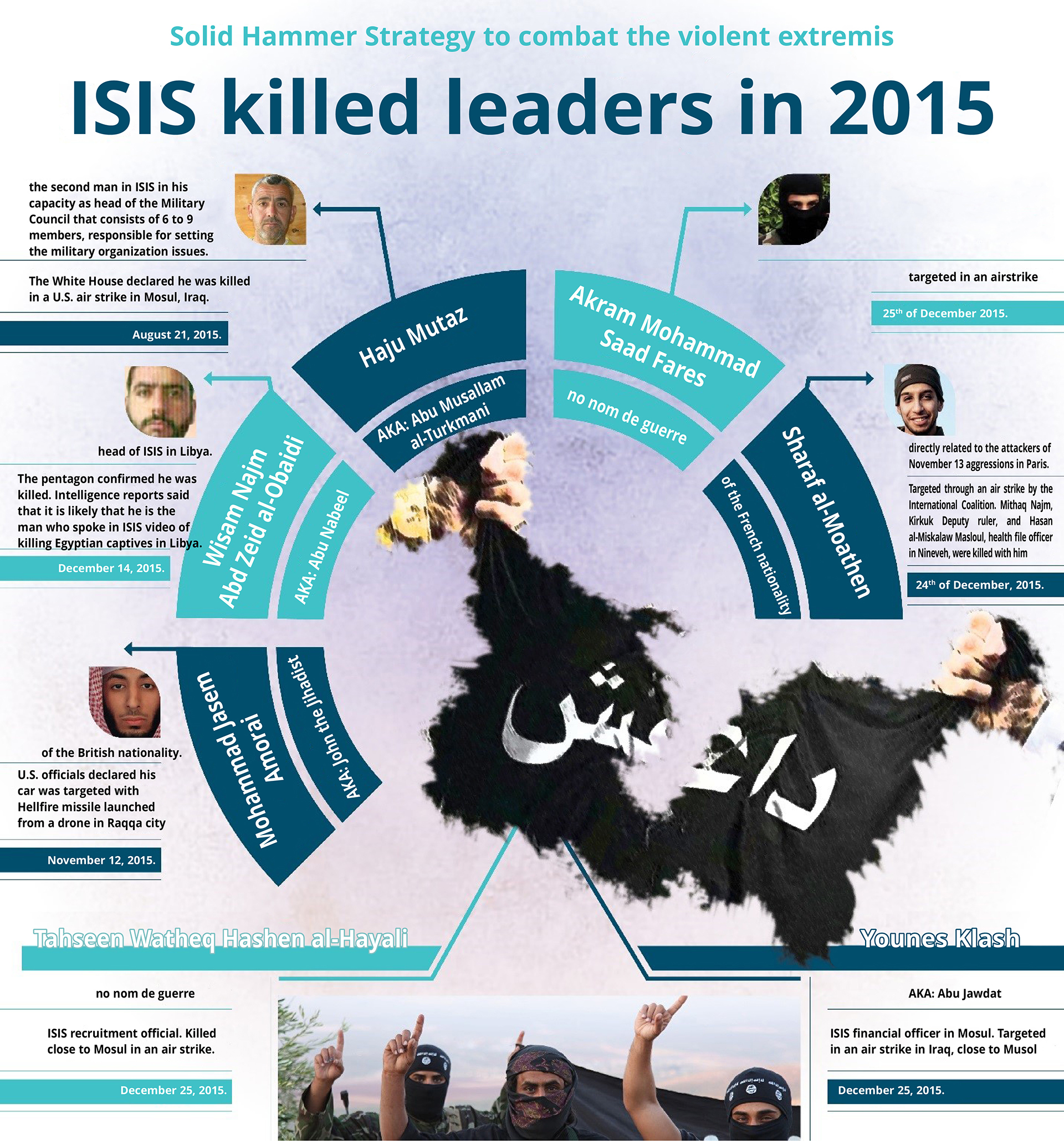
As these extremist organizations used to always do, lower and intermediate ranked members are promoted in place of the senior leaders when killed. However, it was noted that low and intermediate members promoted were not as efficient as the previous senior leaders. Conflicts and disagreements often arise between the new leaders, the matter which led to the decline of the organization and the performance of their members in many crucial battles fought, lost. Then, such organizations had to make concessions to other extremist groups, or work in a framework of decentralization.
It is noteworthy that, in the case of ISIS, the effects of that strategy occur not only at the level of organizational structures and leaderships, but also at the level of theorists and intellectual symbols. One of the U.S. strategy's results was that branches and groups, that pledged allegiance to ISIS in the past, witnessed major divisions and disagreements over leaderships succession, as in the case of Yemen, and in the case of Boko Haram, which is active in Nigeria and the African Sahel. The latter point was clearly manifested in the case of Abu Bakr Shekau, who detonated himself up in June 2021, after being besieged by members affiliated to the group of his opponent, Abu Musab al-Barnawi, who later took control of Boko Haram.
A Part of the Global Coalition against Daesh
The strategy of solid will and Decapitation was established after the creating the Global Coalition against Daesh (ISIS), with the Saudi city of Jeddah hosting the first conferences of the international coalition in October 2014, in the presence of representatives of forty countries at the time. This was a response to Arab pressure, after the escalation of the Syrian and Iraqi crises at the time, as well as with the succession of terrorist operations in a number of Western countries.
The Global Coalition against Daesh vision was based on recognizing three main dimensions, representing the pillars of such Coalition and the basis of its activeness, as follows:
The First Dimension: targeting ISIS strongholds and centers in Iraq and Syria (the claimed fake khalifate). This brought ISIS to an end.
The Second Dimension: the global networks (foreign fighters, finance networks, and communication networks).
The Third Dimension: targeting ISIS sleeping cells all over the world, as well as ISIS members in any country.
The Global Coalition understands that any successful campaign, to confront ISIS, should collectively deal with these three dimensions, in addition to achieve an integration between the efforts exerted in targeting those dimensions. However, the intellectual and ideological confrontation, of these extremist currents and ideas, still needs a lot of effort parallel to the preventive security effort, an important issue that has not taken its required attention and support so far. It was often been limited to the establishment of a communication platform, or the follow-up of news, without accessing the values and ideas.
In light of the recognizing of the importance of the three logistical, organizational, and communication dimensions, the strategy of the international coalition to combat terrorism, in the hotbeds of conflict, included three basic tracks of war against it, as follows:
The First Track: exterior isolation, targeting communication between the organization's structures and branches, via cutting off the vital communication between the organization in the Syrian and Iraqi arenas, by controlling border crossings and areas, as well as the internal isolation on the fronts to dismantle the organization.
The Second Track: sectorial cleansing from the margin to the center, by which the positions controlled by the organization, outside the center, are targeted, and then heading towards the center to target it.
The Third Track: The solid will, or strategy of Decapitation and killing the organization's leaders; it is intended to target the heads of the organization, by targeting the key and field leaders therein. This leads to a confusion, disruption, loss of confidence and communication of the organization’s members. This is in addition to target the organization’s gatherings and mechanisms, central areas, and strategic locations.
Maher Al-Aqal and the Renewed Decapitation Strategy
Terrorist organizations, such as ISIS and al-Qaeda, as well as international and national governmental efforts to combat them, are aware of the crisis of key figures and leadership of these organizations, which are facing a fierce war in banning their media platforms, in addition to their inability to make any new leadership be a key one. This is besides the crisis of their funding, and blocking their opportunities to exploit local and regional crises and conflicts since the so-called "Arab Spring" in 2011.
In this context, the announcement comes that Maher al-Aqal, a senior leader of the Islamic State, was killed in a strike carried out by a U.S. drone – as Pentagon Central Command spokesman Col. Dave Eastburn told AFP – while riding a motorcycle near Gendaris in Syria, while one of his top aides was seriously injured, according to Colonel Joe Buccino, spokesman for the US Central Command. Buccino added, stressing the importance of this strategy and its impact "Getting rid of these ISIS leaders will disrupt the terrorist organization's ability to further conspire and carry out attacks".
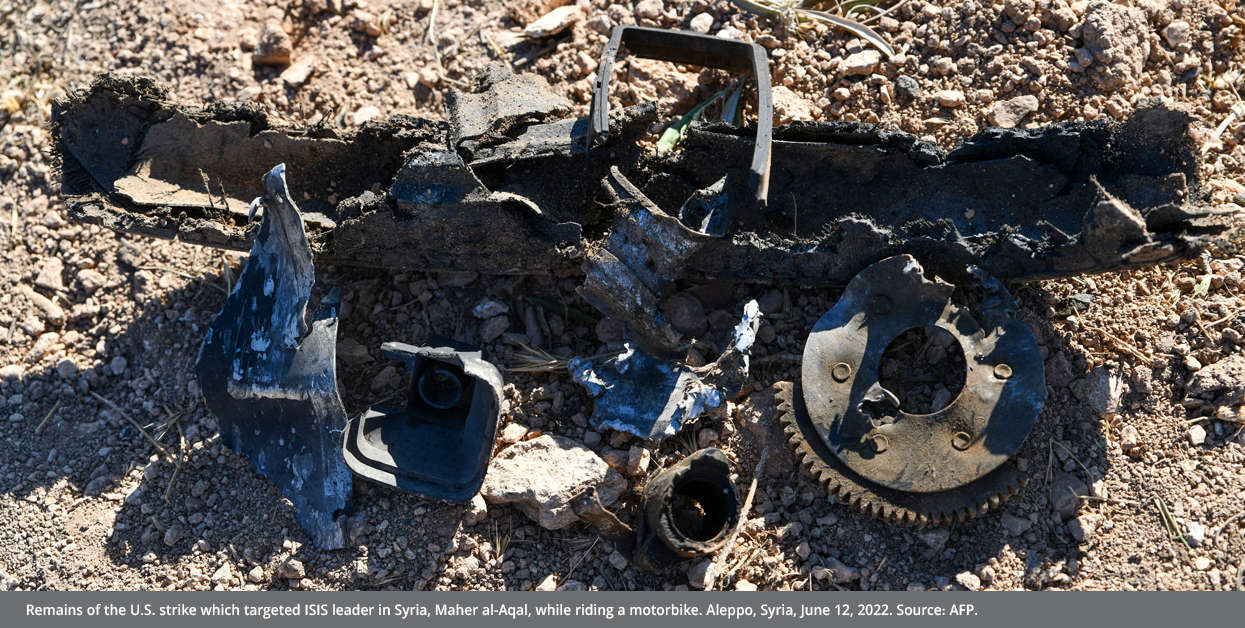
The available information about Maher al-Aqal indicate that he is one of the most extreme organization’s hawks. He is the brother of Fayez al-Aqal "ruler of Raqqa", who was killed in June 2020. He is also the official of the Sharia Commissioned Committee, the highest body of the "Islamic State". His name emerged during the control of "ISIS" on Raqqa before the fall of its strongholds there in 2017, and is currently the official of the General Command of ISIS in the Levant, divided into nine provinces within Syrian territory, extending through its cells in Syrian cities. Its leadership lie inside the nearby territories. From the Turkish border, al-Aqal is also known for seeking to develop ISIS networks outside Iraq and Syria.
In fact, Maher al-Aqal extermination operation has many indicators, mainly:
First: The operation came one day before the U.S. President Joe Biden's visit to the region, and his meeting with some of its leaders. The US president announced, on July 12, 2022 a U.S. military strike in which Maher al-Aqal, the leader of ISIS in Syria, and one of the five largest leaders of ISIS currently, was killed. One of the most prominent ISIS officials and aides was injured with him. The operation did not result in civilian casualties.
Second: it emphasizes continued U.S. interest in the region, war on terror, and regional security threats, as U.S. Central Command "maintains an adequate and sustainable presence in the region and continues its efforts to counter threats to regional security," the U.S. Central Command statement on its Twitter account read.
Third: The continuation of ISIS danger and challenge, despite many years passed since the fall of its strongholds in Syria and Iraq in 2017. Also, the continuation and hindering ISIS attempts to return, by exploiting the opportunities of crises and tensions in Syria, Iraq, and Libya, as well as in South Asia, especially after the rise of the Taliban and its return to power in Afghanistan. ISIS announced that return through a number of qualitative operations in April and May 2022 in Iraq, in what was known as the "Ramadan invasion" that targeted military headquarters, checkpoints, and civilians who cooperate with security services in Nineveh, Diyala, Salah al-Din, and Kirkuk governorates. The attacks included targeting Iraqi army and police patrols, setting up fake checkpoints and IED attacks against Iraqi patrols and vehicles of soldiers returning to their homes, whose units are deployed in and around Rutba district.
Zawahiri: the Man who Lost his Shadow with ISIS
When the rumor of al-Zawahiri's death in 2021 was rumored, some observers and researchers saw that his period of leadership in al-Qaeda was more harmful to the organization than others’ leadership, and that his survival was more damaging than his death. According to the paper of Esfandiar Mir and Colin B. Clark, published in Foreign Policy on September 10, 2020, regarding the 19th anniversary of the events of September 11, 2020, stated that Zawahiri would not think of similar terrorist operations, as the old wanted man – for a reward of 25 million US dollars, is the highest among the world's terrorists. His survival may have hurt al-Qaeda more than his death, according to some analysts.
One ISIS activists described Ayman al-Zawahiri in a long article in 2015 as "the man who lost his shadow". From time to time, rumors were spreading about the illness or departure or his death, the matter that was confirmed with what the United States and the White House announced on Tuesday, August 2, 2022. A crisis of his succession in the leadership of al-Qaeda erupted, increased months later after the killing of the second man in al-Qaeda Abu Muhammad al-Masri (his name is Abdullah Ahmed Abdullah Al-Alfi) on August 7, 2020 in the Iranian capital Tehran. Al-Alfi is one of the attacks planners on U.S. embassies in Africa in 1998, as well as being a planner to the events of September 11, 2001.
Probable End of al-Qaeda
The killing of al-Zawahiri and the crisis of his successor in al-Qaeda, raised questions about the "future of al-Qaeda", the parent organization of globalized "jihadism". Especially with what some observers see as al-Qaeda no longer represents a threat to the world, as it once was. Also, al-Zawahiri, before and after his death, became weak in favor of ISIS. The solid strategy, adopted by the United States and its allies, through drones, in hunting down the organization's senior leaders, from its first founding generation or its second generation of actors, whether in center or branches, have led to the death of the organization, its crisis, with a soon end appearing.
However, some believe that al-Qaeda is trying to return in media, through some sites in Syria, Iraq ,and Yemen, and through some names that are promoted and proposed from time to time, quickly targeted nevertheless, such as Atiyah Allah al-Libi, who was killed in 2011, or Ibrahim al-Rubaish, the ideologue of al-Qaeda in Yemen, who was also killed in 2015. Then the killing of a number of senior branch leaders, such as Hamza bin Laden, who was killed on July 31, 2020, and then Abu Mohammed al-Masri, the second man in the organization, who was killed in August 2020. The question vame back regarding the leadership of al-Qaeda, as al-Masri was one of the most prominent candidates to succeed al-Zawahiri. Meanwhile, Saif al-Adl either retired or abandoned working with al-Qaeda.
Hamza bin Laden, in particular, was a hope for al-Qaeda's survival. It was possible for the organization's members would chose him as a lead in consensus. He was considered to be the most prominent candidates after al-Zawahiri and Abu Muhammad al-Masri. Despite all interpretations, al-Qaeda seems to be in a major crisis, in which the central leadership has lost its influence and contacts. The crisis of successors seems to be strongly present, so that the answer to the question comes from its scale, and that the unknown is what may lead al-Qaeda after al-Zawahiri's demise.
Zawahiri Basically is Hidden
Before the death of Osama bin Laden, and when al-Zawahiri was the second man in al-Qaeda, his appearance and presence back then were more than when he assumed the leadership of al-Qaeda and becoming the first man in it. This reflects rise of a crisis regarding the mother organization of globalized jihadism, and its exposure. Hunting down a number of al-Qaeda’s most prominent major leaders, such as Atiyah Allah al-Libi, Abu Yahya al-Libi, Adam Ghadan, and others followed. ISIS appeared in 2013, defecting in its majority from al-Qaeda’s branches and members. Zawahiri's security obsession increased, the man no longer appeared, nor he had a mobile phone for years. His procedures in going incognito were increased. His trust was limited only a few groups surrounding him.
Thus, killing al-Zawahiri, who did not gain the acceptance and charisma of Osama bin Laden among the takfiris, and was late in his appearing that surprised his supporters and followers that he does not comment on many events he was expected to mention. He, for instance, did not comment on the killing of Abu Muhammad al-Masri, or the execution of the Egyptian terrorist Hisham Ashmawy on March 4, 2020. Nor did he comment on the rising and intensifying conflict between Hurras al-Din (an al-Qaeda-affiliated organization in Syria founded in February 2018) and Hay'at Tahrir al-Sham" that was affiliated to him, when it was called "Jabhat al-Nusra".
Perhaps the most prominent candidate to succeed Zawahiri is Saif al-Adl, the Egyptian and military leader of the organization, who disappeared in Iran, said to have returned to Afghanistan years ago. However, we expect the crisis to continue, same to the the difficulty of agreeing on a successor to Zawahiri among the remnants of al-Qaeda’s branches and members. The possible end of al-Qaeda is looming, as a declaration of the death of al-Qaeda within years, after the death of its two prominent leaders, and the abandonment of many actors in its central leadership since 2008 and 2011 in particular, and the abandonment of others from it and extremist ideology or politics years ago.
Finally, The U.S. focus on targeting and killing the leaders of terrorist organizations and their experienced figures, seems to create a power vacuum, which increases with the accumulation of killings. Eventually leading these organizations into chaos, especially as new and less experienced leaders find themselves forced to constantly change their positions, reduce their communications network, and rely on primitive communication technologies. The U.S. strategy can be summarized in two parts: the first: Targeting important leaders and the second: the complexity of succession issues, because of the leaders’ role, influence, and effect at all levels within their organizations.
The opinions expressed in this study are those of the author. Strategiecs shall bear no responsibility for the views and/or opinion of its author on security, economic, social, and other issues, as they do not necessarily represent the views of the Think Tank.
Keep in touch
In-depth analyses delivered weekly.
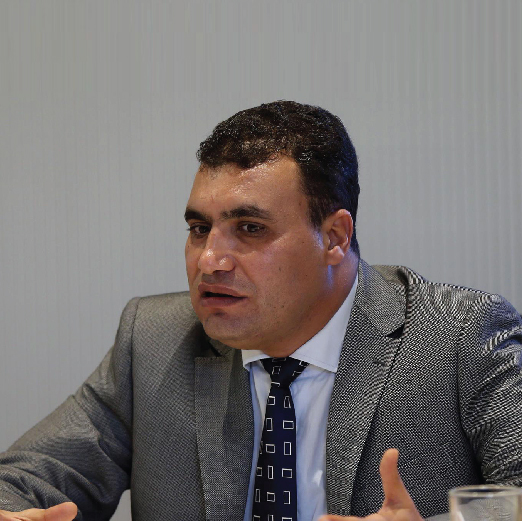
Related Analyses:







